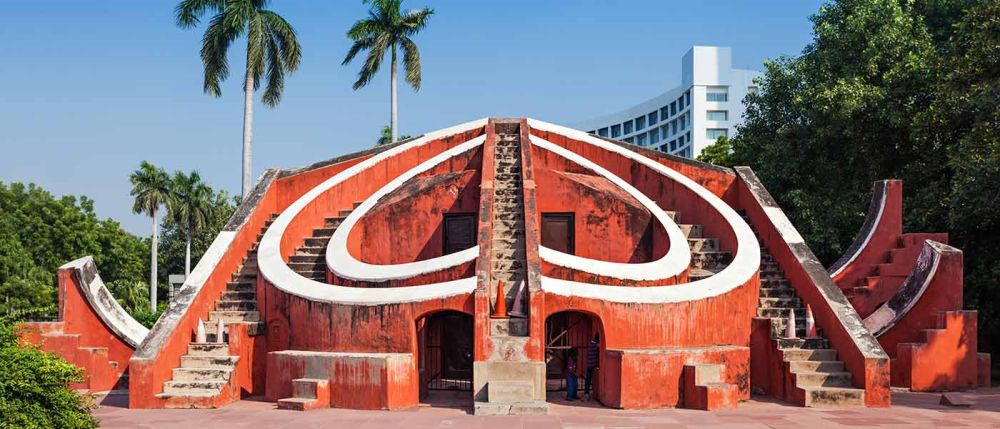

The Jantar Mantar in Delhi is one of the five astronomical observatories built by Maharaja Jai Singh II of Jaipur in the early 18th century. It represents the scientific acumen and cosmological advancements of the time. Located in the heart of India's capital city, Delhi, it serves as a fascinating destination for history buffs, academics, and tourists interested in astronomy and architecture alike.
Constructed in 1724, the Jantar Mantar was built to compile astronomical tables and to predict the movements of the sun, moon, and planets. This observatory comprises 13 architectural astronomy instruments, each with a specific purpose for astronomical measurements and observations. The place is not only a reflection of technological prowess but also an embodiment of the scientific curiosity that predated contemporary instruments and methodologies.
Tourism at Jantar Mantar in Delhi has a rich history. Though the primary purpose of the structure was scientific, its architectural grandeur and historical significance have attracted visitors for decades. Post-India's independence, the observatory was recognized as a national monument, and efforts were made to preserve and interpret this heritage site for posterity.
With the growth of Delhi as a political and cultural hub, Jantar Mantar's prominence among tourist circuits also rose. By the late 20th century, it became a must-visit destination for those exploring Delhi's historical landscape, often included in tours with other sites such as the nearby India Gate and the Parliament.
The government and various NGOs have taken steps to preserve Jantar Mantar for future generations. Restoration work has been periodically carried out, and information panels have been added to educate visitors. Furthermore, guides are often available to provide detailed insights into the intricate workings of the instruments.
More recently, Jantar Mantar has become a symbol for civil demonstrations, making it not only a tourist spot but a center for civil engagement. Regarding tourism trends, the rise of experiential and educational travel has brought about a newfound interest in places like Jantar Mantar. Today's tourists are eager to dive deep into the history and functionality of the observatory, moving beyond just the photographic appeal of the site.
Virtual tours and augmented reality experiences are on the rise, offering in-depth explorations of the site for those who cannot visit in person. Moreover, its central location in Delhi makes it a convenient stop for city tours, which increasingly include ecologically-friendly options such as bicycle tours and walking tours to lower the carbon footprint of tourism.
For visitors to Delhi, Jantar Mantar is open daily, and its central location makes it easily accessible by public transport. While the best time to visit is during the cooler months from October to March, the observatory draws enthusiasts year-round. To make the most out of the visit, it is recommended to hire a guide or use an audio guide available at the site to understand the historical and astronomic relevance in detail.
Jantar Mantar of Delhi stands not merely as a collection of architectural curiosities but as a chronicle of India's storied past in scientific endeavor. As tourism trends evolve and heritage preservation becomes increasingly important, Jantar Mantar continues to be a relevant and fascinating destination for visitors from around the world.